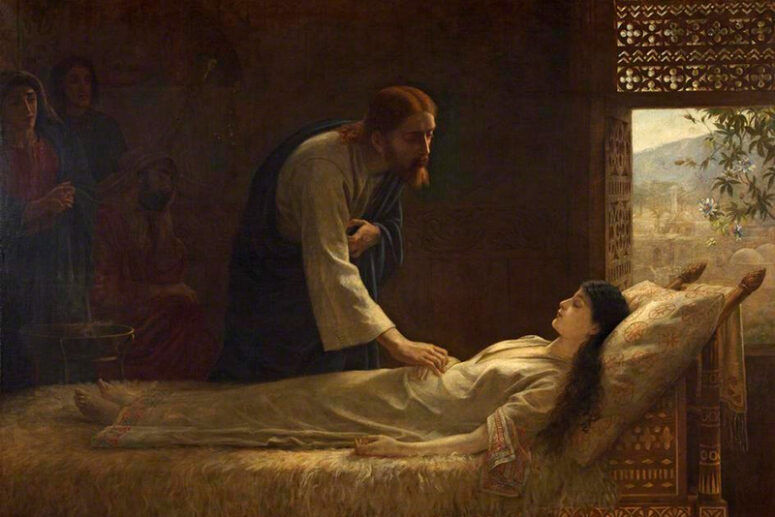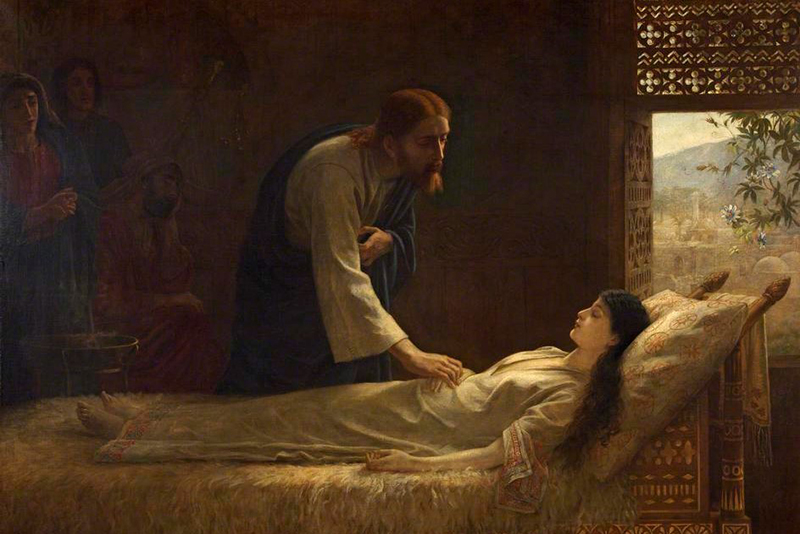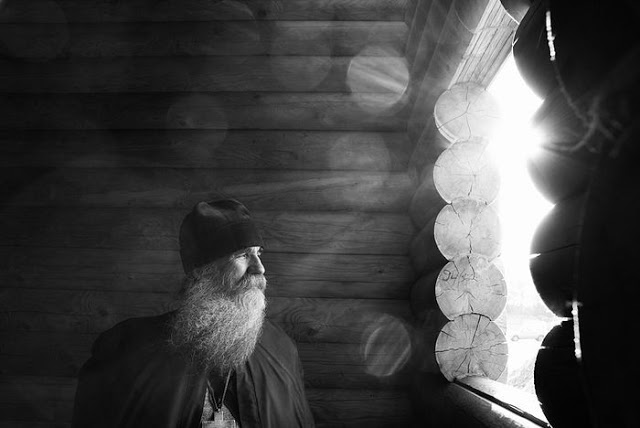
Modern medicine has made great advancements in critical care. Doctors have learned to resuscitate more people with damage to their vital organs. On the Internet, we can read numerous accounts from people who have returned to life and experienced an afterlife in clinical death. As Christians, what should we make of these accounts? More broadly, what is the experience of the Church with people who returned from the dead?
Nothing extraordinary for Christians?
In our faith, we find a fair number of examples of the resurrection of the dead. We read about them in the Old and New Testaments. Moreover, when Our Lord and Saviour Jesus Christ came into this world, Christians came to perceive the resurrection of the dead as the norm. “The blind receive sight, the lame walk, those who have leprosy are cleansed, the deaf hear, the dead are raised, and the good news is proclaimed to the poor.” (Matthew 11:5). The immortality of the soul beyond our physical death became a central tenet of Christ’s teachings. “He is not the God of the dead, but of the living, for to him all are alive.” (Luke 20: 38). Yet, on occasions, Jesus returned to worldly life some people for the instruction of Christians and conversion of the Pagans. By His grace, His disciples and saints have performed miracles of resurrection, even in our time. Some of these miracles have been attributed to several icons of the Theotokos and certain Christian relics, like the Holy Life-giving Cross.
Admittedly, no soul can reunite with the body beyond a certain point in time, making worldly resurrection impossible. We do not know what it is, but the example of the righteous Lazarus of Four Days shows that resurrection is still possible on the fourth day, after the body has already begun to decompose.

Saint Mark of Kiev Caves provides an illustrious example of the treatment of the dead. Ascetising as a monk of the Kiev Pechery Monastery in the 11th century, he acquired a gift from God – the ability to make the dead listen to him. On one occasion, he had not had the time to dig a large enough grave for a brother who died prematurely. He had to put him in a smaller one, with no room to put his clothes right, or even to put myrrh on his body. Then the saint asked the dead, “Brother, the space is small, and I cannot put myrrh on your body. Please do it yourself. The dead brother extended his arm, took the myrrh and put it cross-wise on his chest. Then he gave back the bottle, straightened out his clothing and went back to sleep. On another occasion, he requested another brother who died prematurely, “Please wait until tomorrow while your grave is being finished, and I will lay you to rest then. The brother resurrected and lived for another day. A third incident took place with Saints Theophyl and his brother John. While the elder brother Theophyl was away on monastery business, his brother John fell ill and died. Several days later the Monk Theophyl returned and went to view where his dead brother was placed. Seeing that he lay within their common grave at the head place, he became indignant with Blessed Mark and said: “Why is he put here in my place? I am older than he.” The cave-dweller Mark, bowing humbly to the Monk Theophyl, asked that he forgive him. Then, turning to the dead man, he said: “Brother, arise and give this place to the older, and you lie down in the other place”. And the dead man moved in the grave. Seeing this, the monk Theophyl fell at the knees of the Monk Mark begging his forgiveness.
Let us also review some examples of the miracles of resurrection performed by some of the more recent saints. In the 18th century, the blessed Xenia of Saint Petersburg resurrected a little boy who had drowned in the Neva River. The saint saw the distraught mother as she received the lifeless body of her son. Out of pity for the woman, the saint addressed God with a vehement prayer, then touched the boy’s body, and returned him to life. In the 19th century, the Holy Righteous John of Kronshtadt resurrected a baby in its mother’s womb. He knew that family well. The doctors had pronounced the baby dead in the womb. The saint retreated to a room and prayed with great effort. After some time, he came out and said, “God has willed to perform a miracle and resurrect the dead baby. Liza will have a boy.” A century later, ” a girl who died travelling to see the Saint Elder Amphilochios of Pochayеv returned to life by his prayers.
How are these miracles of resurrection distinct from all other examples of resuscitation, for example, in intensive care? First, the saints resurrected the dead by nothing other than the grace of God. For them, the feat of resurrection was no more special than any other miracle, such as healing or delivery from demons. Second, the resurrection of the dead was never an end in itself. The saints always performed it as a part of their ministry among the non-believers and for bringing the resurrected to repentance and salvation. As the holy fathers have said, repentance of a sinner is a greater feat than the resurrection of a dead person.
The resurrected

In the past, the people who were resurrected left no accounts of their experiences, and the saints outright refused to discuss them. Some of the best-known saints who resurrected were Saint Lazarus of Four Days, whom Christ had called his friend, and Saint Lazarus of Pskov-Pechery Lavra. What can we learn from them?
According to some accounts, the Righteous Lazarus of Four Days became a different man. Mindful of his end, he rarely smiled. He always liked to hold something sweet in his mouth to suppress the taste of Hades. Before the resurrection of Christ, even saints went to Hades. Having been dead for three days, he must have acquired a familiarity with it.

Even before his death, the Venerable Lazarus the Discerning practised rigorous asceticism, adhering to a strict fast, walking around in chains. He had had a coffin made for himself during his lifetime. He died. He had been dead for three days, and his body had been prepared for burial when he unexpectedly resurrected. In his ultimate humility, he never disclosed to anyone the details of the act of Divine Providence. After his resurrection, he ascetised even harder. He wore heavier chains and lived under an oath of silence. On some very rare occasions, he would say to his visitors with great grief, “Agonising is a sinner’s death.”
As we see from these examples, in the Orthodox view, an afterlife is not a foretaste of paradise, but a constant reminder of the torments of hell that await a sinner. It is a cause for remembering our unworthiness and our need to engage ourselves even harder in prayer and the service of God. The Holy Fathers of the Church were keenly aware of it and practised this advice throughout their lives. “In whatever you do, remember your last days, and you will never sin.” (Sirach 7:36).
This is very different from the views held by many unchurched people. “I am not afraid of death anymore,” some declare. “I no longer feel sad at a funeral,” say others. “Worldly life is a prison, and death is a liberation,” some might conclude. These views seem like demonic deception at seeing light but not the darkness, and at not realising the need to work hard to reunite one’s soul with one’s body.
Yet the understandings of the believers and non-believers have one thing in common. They are all evidence that an afterlife is real. Unbelievers may attribute their return to life to the achievements of medicine, or gaps in the knowledge of human biology, but even many scientists recognise the reality of a soul’s life after separation from the body. For the Christian faithful, every breath is a miracle of God, and every healing or resurrection is for His glory. As Jesus Christ said of the Righteous Lazarus, “This sickness will not end in death. No, it is for God’s glory so that God’s Son may be glorified through it.” (John 11:4) For the faithful, the first miracle of resurrection — the rising from the dead of Jesus Christ – already happened. The second miracle, our resurrection to everlasting life, still awaits us in the future.





Thank you for providing this information to me. I do enjoy reading these bits of important history.
You are welcome!